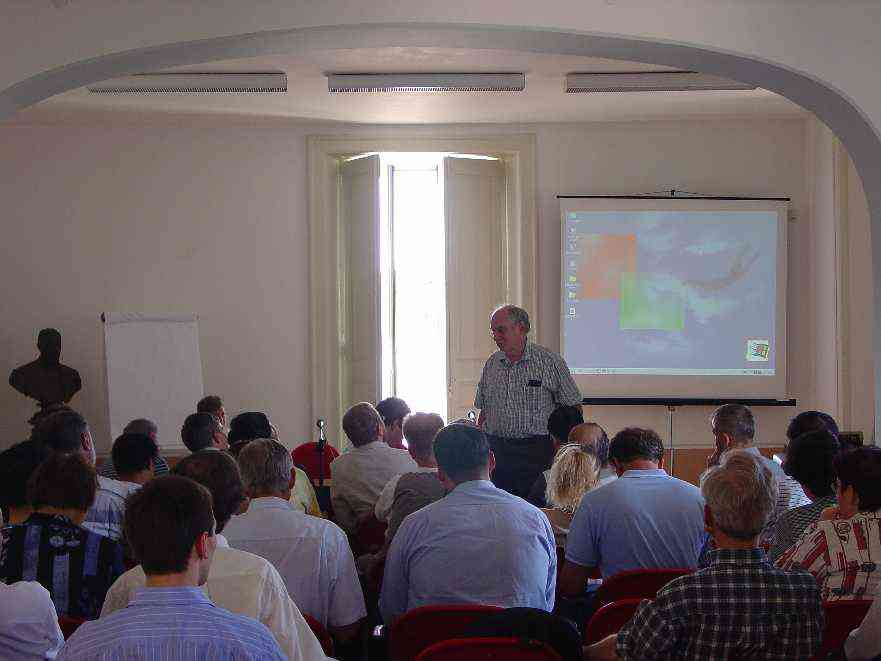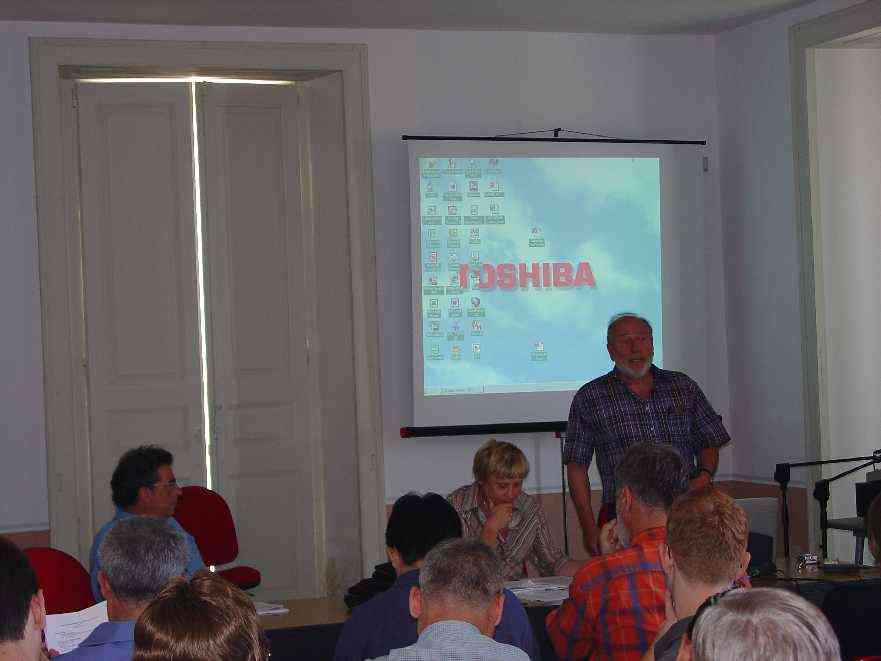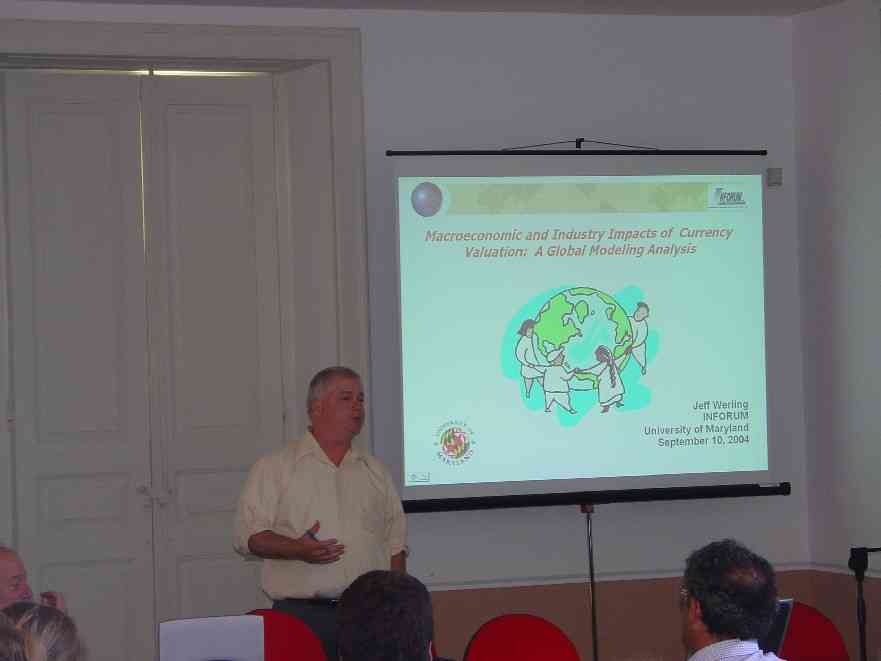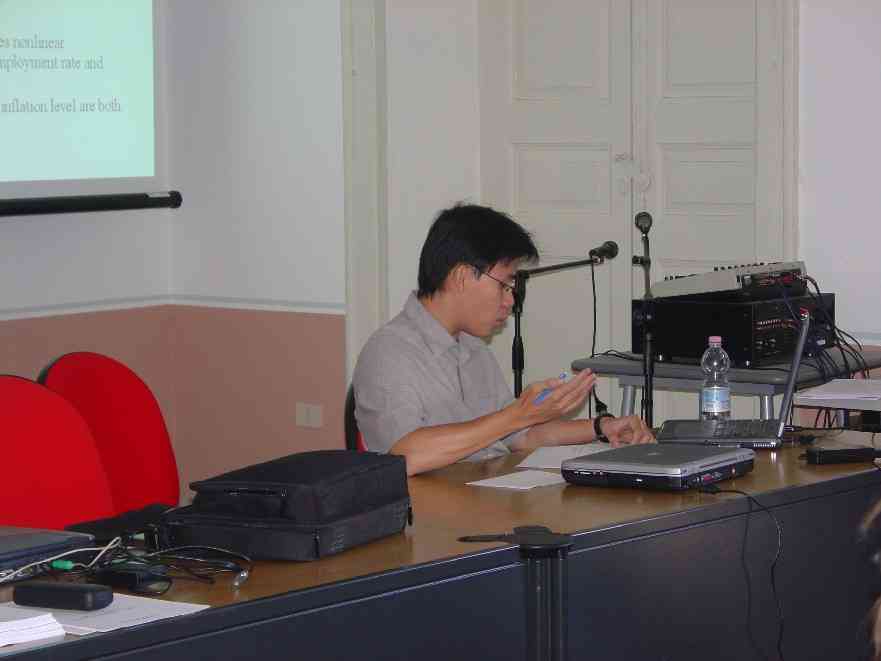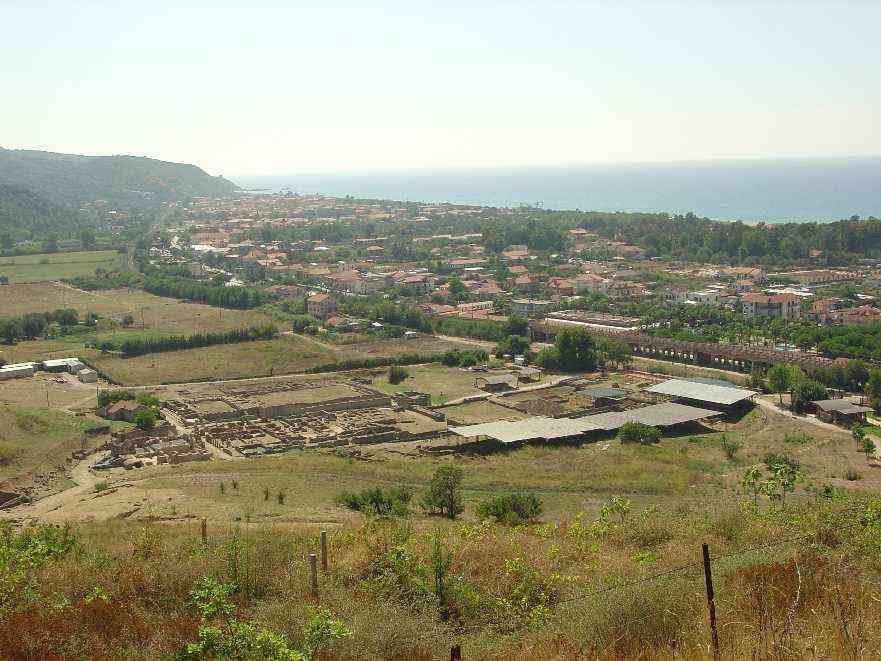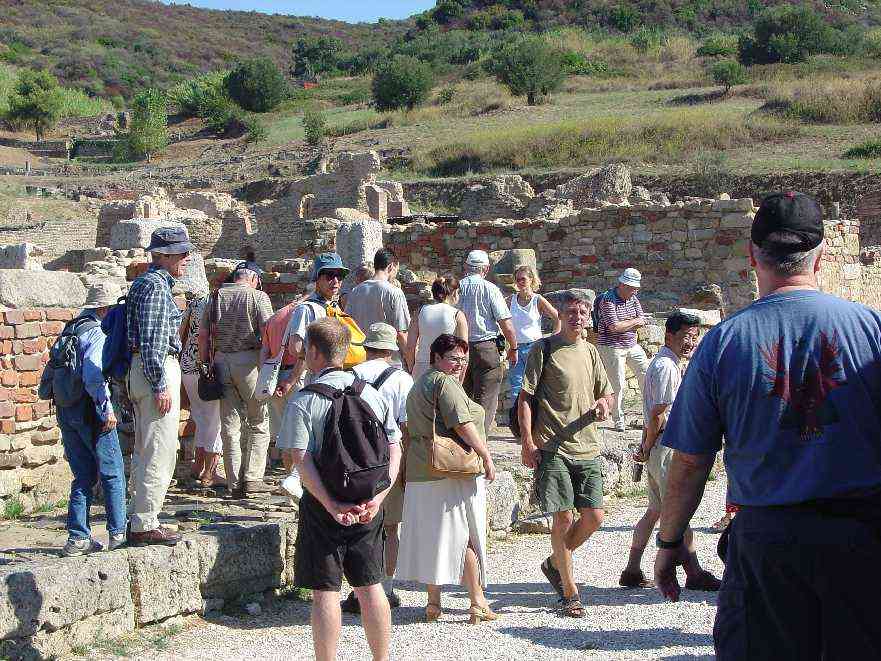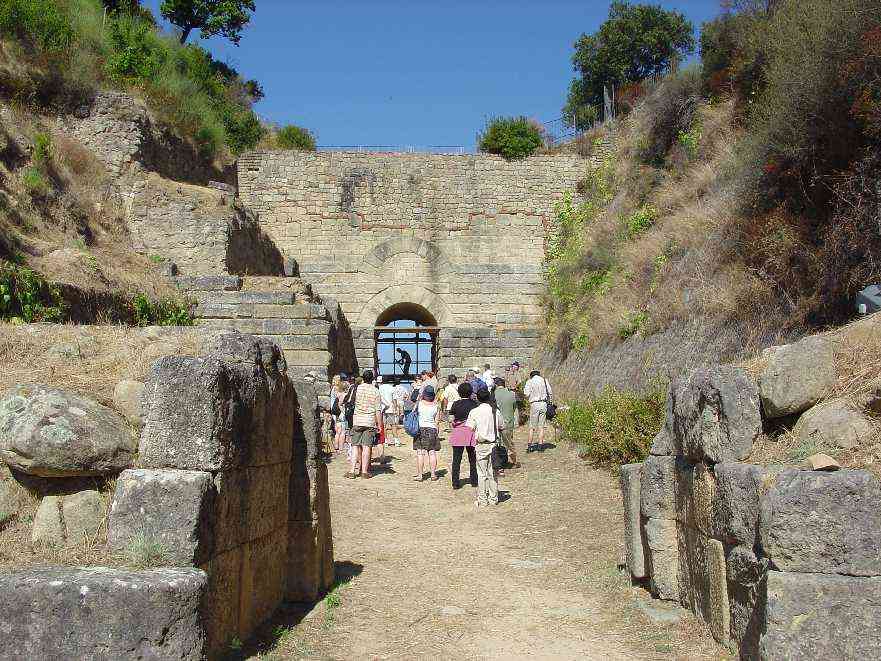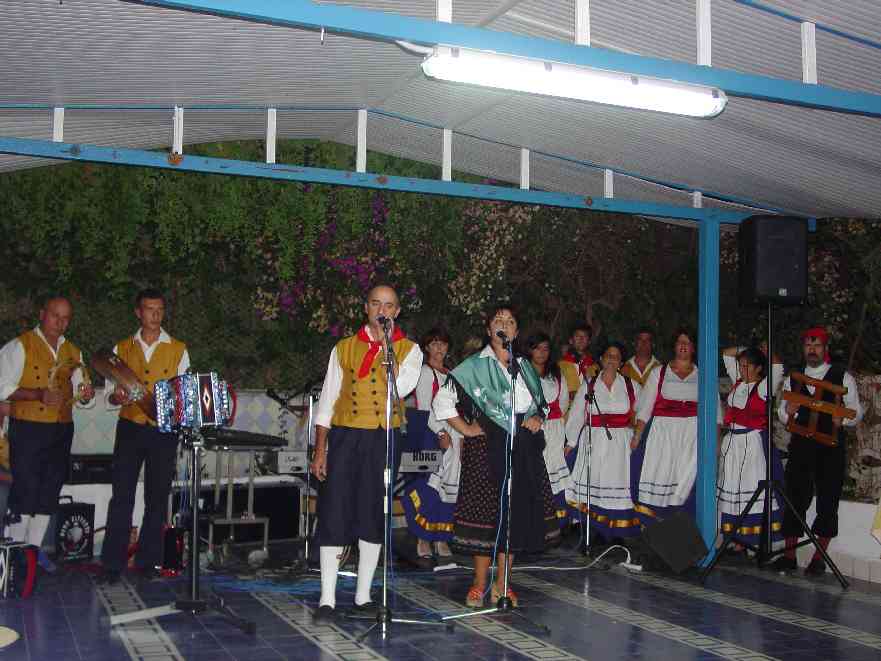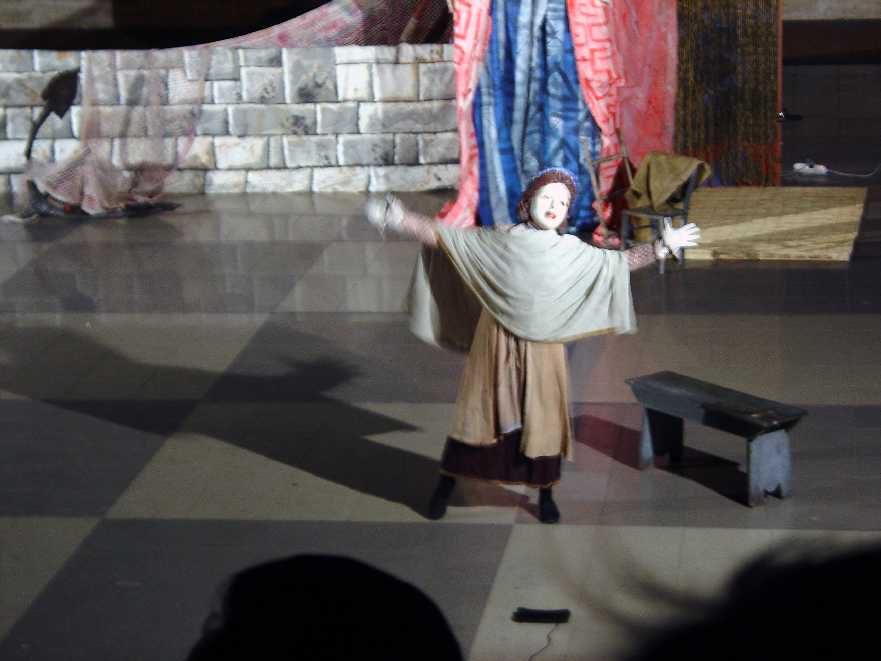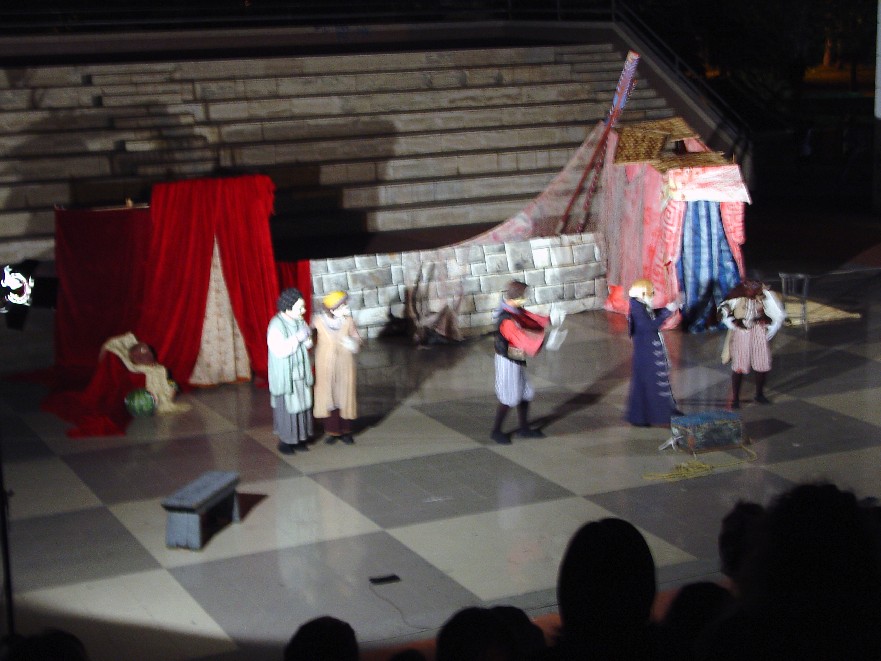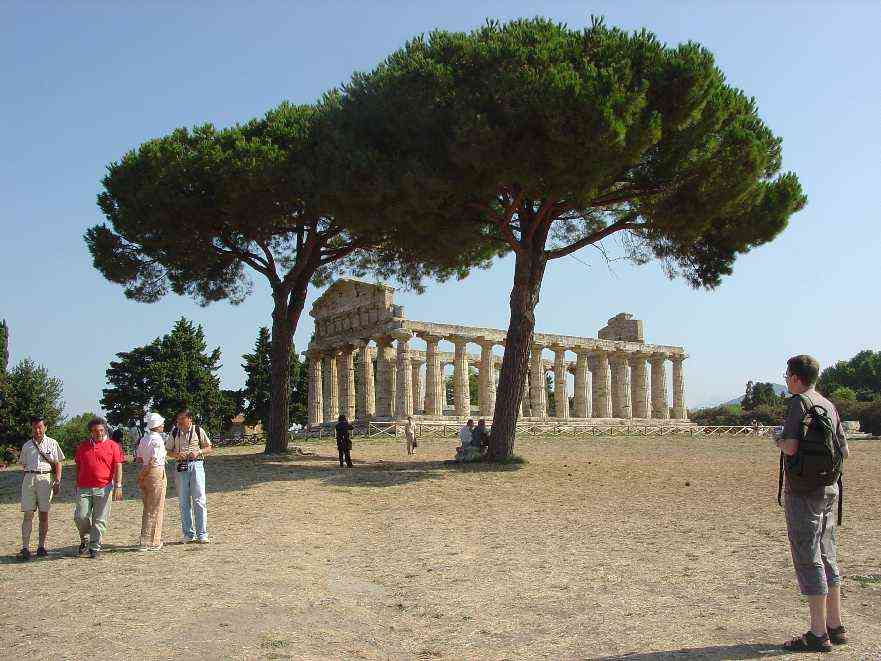Program for the Twelfth World Inforum Conference
Ascea, Italy
2004 September 5 - 11
Monday, September 6
Introduction: Dr. Maurizio Grassini and Dr. Clopper Almon, who kindly acted as hosts for the
XII Conference, welcomed participants as the conference began Monday morning.
News from groups in various countries: After the introduction, a representative from each country
summarized work by partners in their homeland.
Session 1 - Regional models (Chairman: Marat Uzyakov)
Juan Carlos Collado (Spain) “Tomillo’s Experience with MEDEA, a Model of the Andalusia Region.”
After showing the main features of MEDEA, I will talk about the needs of the users and the issues which have been
most difficult for them. The objective is to get some lessons for the future with this type of client -a regional
economic office serving the regional Minister of economics.
Douglas Meade (USA) “
The BEA Annual Capital Flow Table.”
The Bureau of Economic Analysis (BEA) has just completed an initiative to integrate the annual (I-O) accounts with
the GDP-by-industry accounts. This is the first step to the long-run integration of the Benchmark I-O accounts with
the GDP-by-industry and with the National Income and Product Accounts (NIPA). It is also the first time that a complete
time-series of annual I-O tables has been generated for the U.S. for a five-year period, from 1998 to 2002. A natural
outgrowth of this initiative is the addition of an annual capital flow table to the integrated annual industry accounts.
A capital flow table shows total investment used by each industry, as well as the composition of that investment. For
example, it shows that in 1997 the Financial services industry was one of the largest users of computers, and that the
Auto rental industry was the largest user of automobiles. This paper describes the plans for BEA’s initiative,
reviews proposed data sources and methodology, and relates the U.S. work to the annual business invesment by industry
data produced by Statistics Canada.
Lucja Tomaszewicz and Joanna Trebska
(Poland) "
Regional Input-Output Tables for Poland"
Tuesday, September 7
Session 1 - Getting started with Inforum Models (Chairman: Juan Carlos Collado)
Clopper Almon (USA) “Interdyme Pedagogy.”
Learning to use the Interdyme system for building dynamic interindustry models has been difficult because much had to learned before anything could be applied. Addition of a few matix operations in G has made it possible now to lead learners into Interdyme gradually. First the VAM file is introduced and simple input-output calculations are performed entirely in G. Tables are made with the Compare program, including “matrix listings” before introducing Interdyme. Interdyme is then introduced with a one-table, eight-sector model of an imaginary country. Features are then added and illustrated a few at a time.
Ronald Horst (USA) "G7 Extensions: Matrix Operations and Quadratic Programming"
This presentation summarizes recent work on G7, the regression and data processing tool developed by Inforum. Recent important developments include extended support for vector and matrix operations and additional constrained regression techniques.
Maurizio Grassini (Italy) and Tiiu Paas (Estonia) “Overview of the Estonian Economy and the
Progress of the Estonian multisectoral model.”
Maurizio Grassini (Italy) and Remigijs Pocs (Latvia) “Overview of the Latvian Economy and the Skeleton of the Latvian multisectoral model.”
Session 2 - Data and Models (Chairman: Li Shantong)
Mike Field (USA) “Estimating Input-Output Tables Consistent with National Accounts for China.”
This paper deals with problems of (1) taking account of the difference between commodity sector data (the input-output table) and industry sector data (the national accounts) and (2) dealing with the problem of FISIM.
Wang YinChu (China) "An Analysis of Jiangsu Economic Growth Goals in the 11 th Five-year Plan (2006-2010)"
Phillip Wild (Australia) “Overview of Progress and Problems of the Australian Model.”
One difficult aspect is that our IO tables are industry by industry tables where most of the concordances produced by our official statistical agency map from national accounts (purpose) classifications to the use matrix. Hence our bridge matrices will typically involve the product of 2 separate matrices - the concordances (which bridges to IO commodities) and some modified version of the make matrix which bridges from IO commodities to IO industries to achieve our targets in the IO tables.
Josef Richter (Austria) “The Present and Future Data Situation in EU Countries for Inforum Modeling.”
Introduction to Velia: An after dinner talk by Clopper Almon in dinning room of the Albergo Elea.
Wednesday, September 8
Wednesday morning – Outing to Velia
Session 1 - International Aspects (Chairman: Lucja Tomaszewicz)
Yasuhiko Sasai (Japan) "Constructing JIDEA model version 5.1 for Japan-China bilateral trade."
Toshiaki Hasegawa (Japan) "Japan-China Regional Economic Integration and Asian Economic Growth: Influence on the Japanese Economy."
Takeshi Imagawa (Japan) "International Competitiveness of Japanese Industries in the US Market."
Michal Przybylinski (Poland) "Foreign Trade and Air Pollution in Poland. Effects of Transition"
Thursday, September 9
Session 1 - Equations (Chairman: Frank Hohmann)
Mariusz Plich (Poland) "New PCE Equations for Poland"
Peter Rormose Jensen (Denmark): “A New Model of Consumption of Motor Vehicles Based on Gross and Net Stocks”
Jakub Boratynski (Poland) "Modelling Income Distribution in the SNA Framework"
Alexander Shirov (Russia) "Using factors of external demand to construct export equations in RIM"
Session 2 - SAM’s and Product-to-Product Tables (Chairman: Douglas Meade)
Reelika Parve (Italy) “ Experiences with Almon’s Product-to-Product Algorithm: The Cases of Italy, Spain, Sweden, Estonia, Latvia, Poland and Turkey Supply and Use Tables.”
Li Shantong and He Jianwu (China): “ SAM-based Multiplier Analysis for China's economy."
M. Uzyakov and R. Uzyakov (Russia) "Development of the Russian Economy in 2004-2005: a scenario forecast"
This article deals with the development of the Russian economy till the end of 2005. The main attention is paid to an alternative scenario where a substantial growth of the world oil prices is assumed for the next two years. The results were obtained through the calculations on the basis of the quarterly macroeconomic model.
Gazhi Ozhan (Turkey) “A SAM for a Region in Turkey.”
Friday, September 10
Session 1 - Applications and Experience with optimization (Chairman: Maurizio Grassini)
Somprawin Manprasert (Thailand) “Optimization of Fit and Policy in TIDY – the New Thai Interindustry Dynamic Model."
Jeff Werling (USA), “The Macroeconomic and Industry Impacts of U.S. Currency Valuation: A Global Modeling Analysis.”
This investigation of the macroeconomic and industry implications of U.S. dollar depreciation against specific currencies uses a global, dynamic, general equilibrium approach. In particular, we will employ the LIFT model of the U.S. economy together with the Inforum Bilateral Trade Model (BTM). The study will trace the impacts through 2012 of one-time exchange rate changes in 2005. At the macroeconomic level, the study will reveal the impact of currency changes on interest rates, inflation, real growth, and employment. At the industry level, the study will show how global rebalancing will impact the competitiveness, output, and employment in U.S. sectors, especially manufacturing.
Iwona Swieczewska (Poland) "The Impact of FDI on the Efficiency of the Polish Economy. A Sectoral View"
Frank Hohmann (Germany) "Synchronizing Inforum Models"
Session 2 - Future plans (Chairman: Jeff Werling)
Plans for the future were discussed briefly. The main topic was the location of the XIII Inforum World Conference. Inforum partners from China graciously offered to host the next World Conference.
